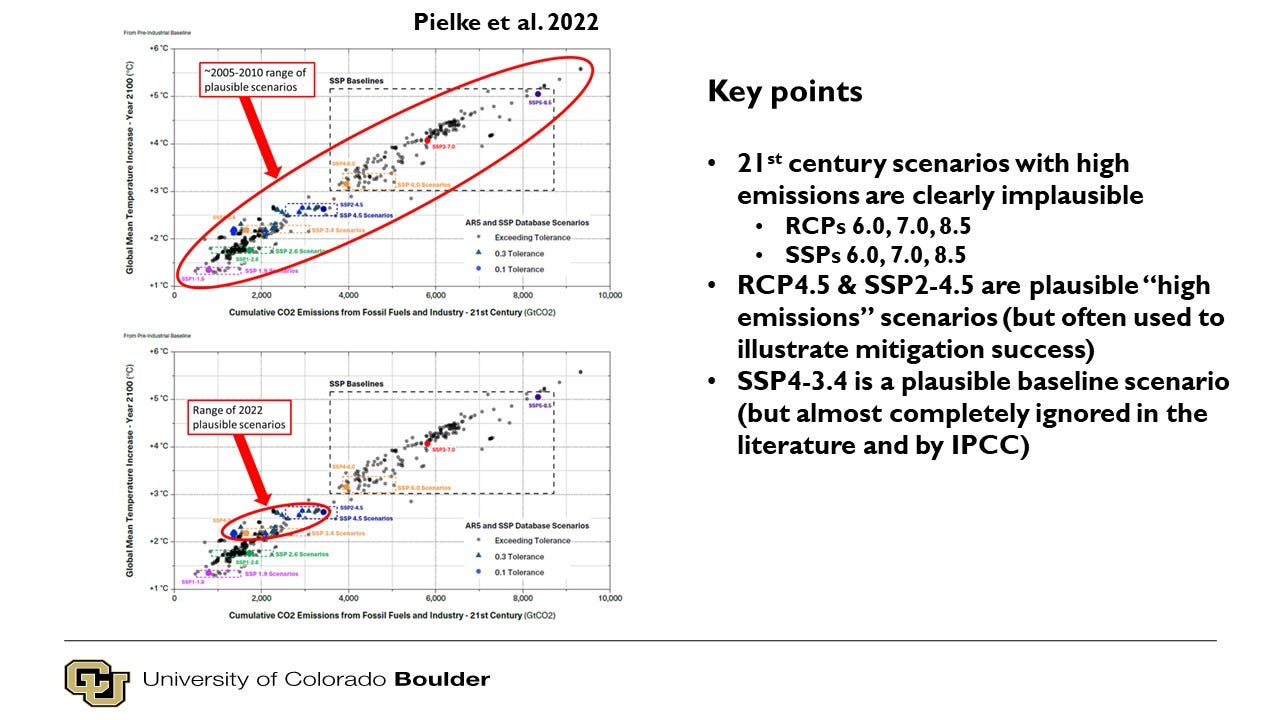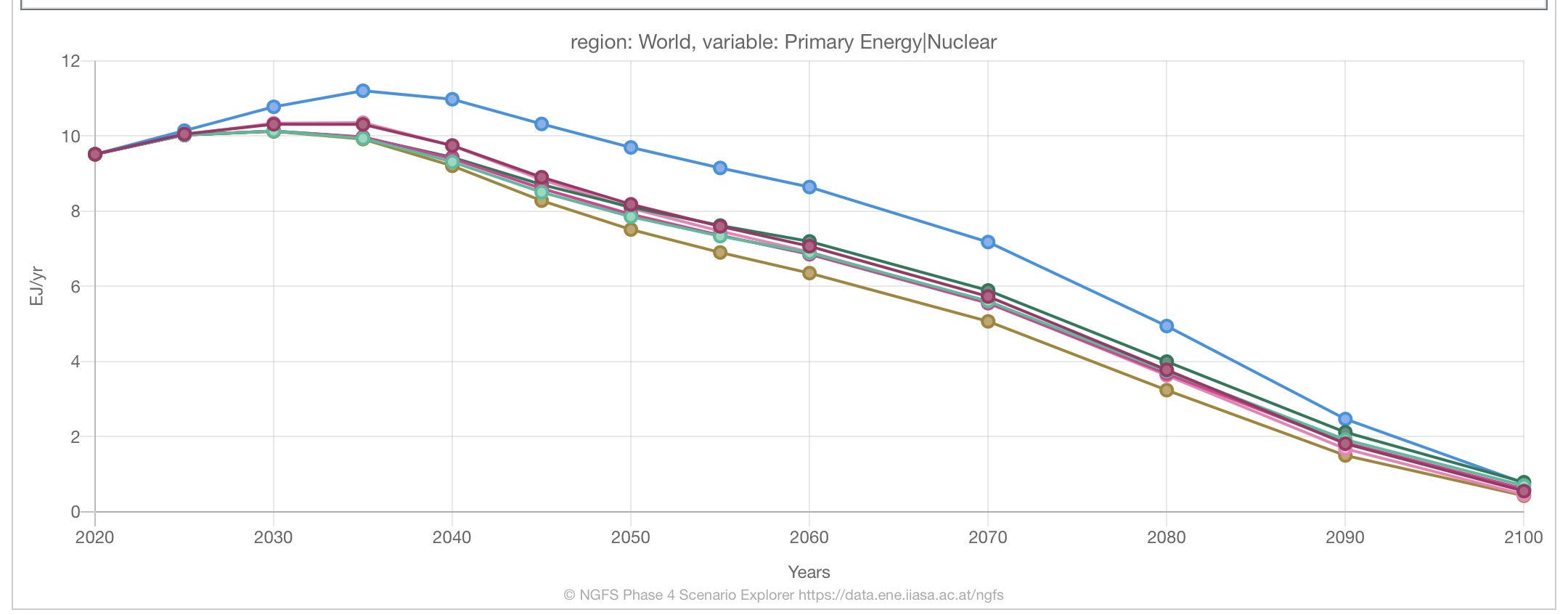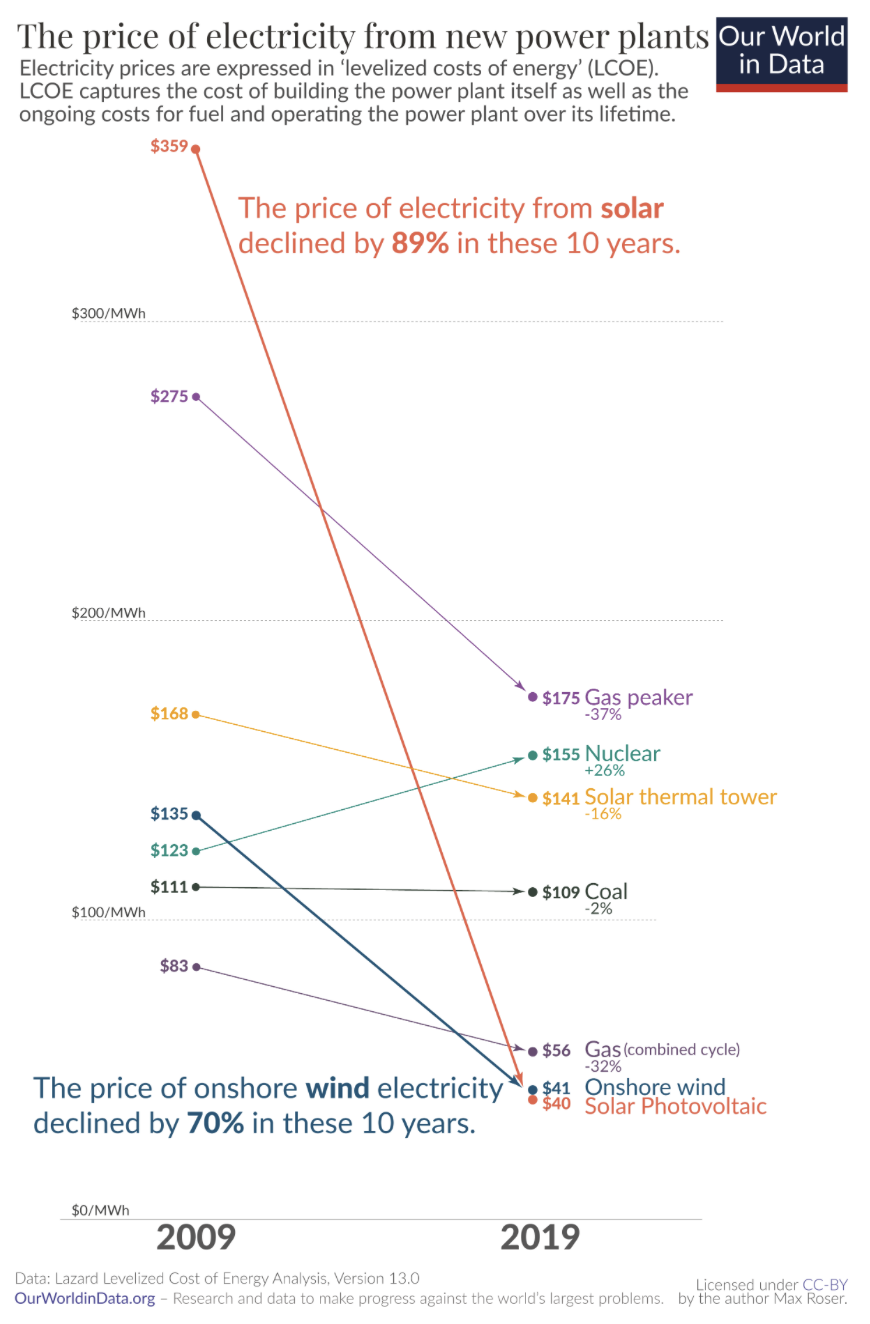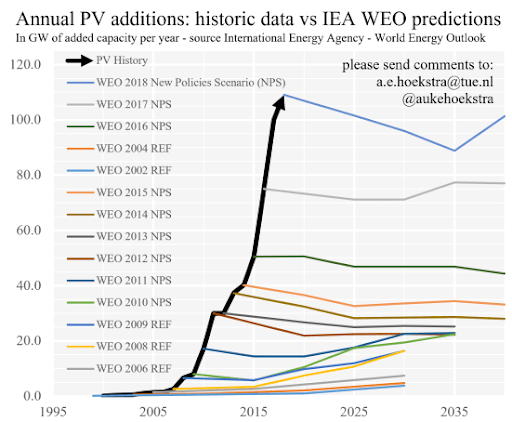Inspired to finally write this up while listening to Hannah Ritchie’s’s great book: Not the End of the World: How We Can Be the First Generation to Build a Sustainable Planet
I’m not personally worried about climate change, and this note describes why.
In 2022 while working at the McKinsey Global Institute I got a deep-dive, crash-course in climate modeling while for a couple months on a report about financing the climate transition.
This was awesome because I didn’t really have a lot of priors about climate change, so I believe I came out with a pretty fresh/less biased perspective. (Maybe!)
Here is how I summarize my optimism to friends & family:
- The range of plausible outcomes has shrunk dramatically in the last 20 years, eliminating the most catastrophic scenarios.
- Standard models don’t consider any upside breakthroughs and there are many plausible upsides.
- A transition to a low-emissions world is now possible with current technology.
- Scenarios have consistently underestimated reality on key measures such as solar and nuclear deployment.
Modeling anything at the decade scale is really hard. So this isn’t a takedown of climate models or those who make them. To make well-informed predictions you do need to model. But, it’s important to understand how assumptions → models → scenarios → predictions.
Here’s more detail on each of those points:
(1) The range of plausible outcomes has shrunk dramatically in the last 20 years, eliminating the most catastrophic scenarios.
Did you know that US emissions peaked in 2008? If you account for trade — “offshoring of emissions” — then it peaked even earlier in 2006. United States: CO2 Country Profile - Our World in Data
To model the impact climate change you have to make predictions about the path of CO2 emissions (and many other variables) — call it a scenario. To create a scenario for the path of CO2 emissions, you also have to guess at population size and emissions intensity per person. In the 1990s and 2000s you could plausibly model out a range of scenarios for global warming up to +8.5C or even more. That’s really bad! If you plug in that much warming in to a model of climate you do get catastrophic results.
In the last 20 years the range of plausible warming scenarios has shrunk dramatically:
 Source: More Good News From the Most Recent Climate Scenarios via
Source: More Good News From the Most Recent Climate Scenarios via
Consider the Paris Agreement . World leaders have made a public commitment to try to limit warming to 2C and ideally 1.5C. The world may or may not succeed at that goal — but just consider that it doesn’t sound ridiculous for world leaders to say that as a target! The catastrophic scenarios are not plausible any more. (Now, 2C or just a bit over is still possibly disruptive. But it isn’t doomsday)
How did this happen? Many countries have decoupled economic growth from CO2 emissions, even if we take offshored production into account - Our World in Data. You can bucket the reasons for this into a couple categories:
- Efficiency. Lots of small improvements to everyday products — houses, cars, buildings, agriculture — that reduce emissions per-use.
- Initial deployment of low-emissions technology. Solar is happening! Wind is happening! Look at how many Teslas are on the road. This decreases emissions relative to what you could have predicted in 2005.
- Slowing population growth. For example, China’s population may have peaked in 2021. Now falling fertility is a problem for many other reasons. But you can’t plausibly model a scenario with massive population growth in China and India anymore.
Doomsday scenarios require economic growth & emissions to stay linked. And they aren’t any more.
(2) The standard models don’t consider any upside breakthroughs and there are many plausible upsides.
If you look under the hood, the underlying assumptions in the scenarios don’t consider any weight to “moonshots.”
For example, even Net Zero 2050 scenarios have nuclear power generation declining in level terms o0ver the next 100 years.
 Source: NGFS Scenarios Portal
Source: NGFS Scenarios Portal
This makes sense to some degree — nuclear hasn’t had a great couple decades. But if you want to make an expected value prediction you have to take more factors into account. What about a possible nuclear comeback?
There are many plausible upside breakthroughs across sectors such as a nuclear energy comeback, fission, major battery materials efficiencies, geothermal energy, lab-grown meat, at-scale carbon capture etc.
In expected value the moonshots are worth something! And there are a lot of possible moonshots.
(3) A transition to a low-emissions world is now possible with current technology.
But we don’t even have to rely on moonshots. Thanks to the dedication of many, many people, the hard work has already been done — in the last decade improvements in batteries, solar, wind, and other technologies make an energy transition feasible with what we already have. Potential upsides are a bonus!
It’s now cheaper to deploy solar than coal or even natural gas.
 Source: Why did renewables become so cheap so fast? - Our World in Data
Source: Why did renewables become so cheap so fast? - Our World in Data
People will throw out a lot of questions — what about peak energy needs, what about storage, what about the metals needed for batteries — I haven’t heard anything that convinces me that an energy transition can’t happen. Hannah Ritchie’s Substack answers many questions you might have.
In other words, though we haven’t managed to convince the general public to make deep material sacrifices to fight climate change, we have managed to convince several key segments of society to join the fight in a highly effective manner. The effort to invent green technologies has been broad, consistent, sustained, and vigorous. And it’s pretty clear at this point — in a way that it wasn’t clear a decade ago — that the effort is going to be successful. Climate optimism of the will - by Noah Smith - Noahpinion
(4) Scenarios have consistently underestimated reality on key measures.
Modeling is hard. Exponential growth rates can feel implausible. For whatever reason, the scenarios have consistently underestimated reality on key measures like solar and nuclear power deployment, mostly by assuming linear instead of exponential growth.
For more details see here, here, or here.
And it’s not just solar and wind. Nuclear too:
 Source: IMF Staff Climate Notes
Source: IMF Staff Climate Notes
And remember from above, the scenarios generally have nuclear power generation declining for 100 years straight.
Change is constant
Heracleitus is supposed to say that all things are in motion and nothing at rest; he compares them to the stream of a river, and says that you cannot go into the same water twice. — Plato
A synthesis would be: I’m generally not worried about climate change because so much has changed in the last 20 years.
The flip side of this is that much could change in the next 20 years, or the 20 after that, for better and for worse. Yes! Welcome to life.
See also:
 Source:
Source: